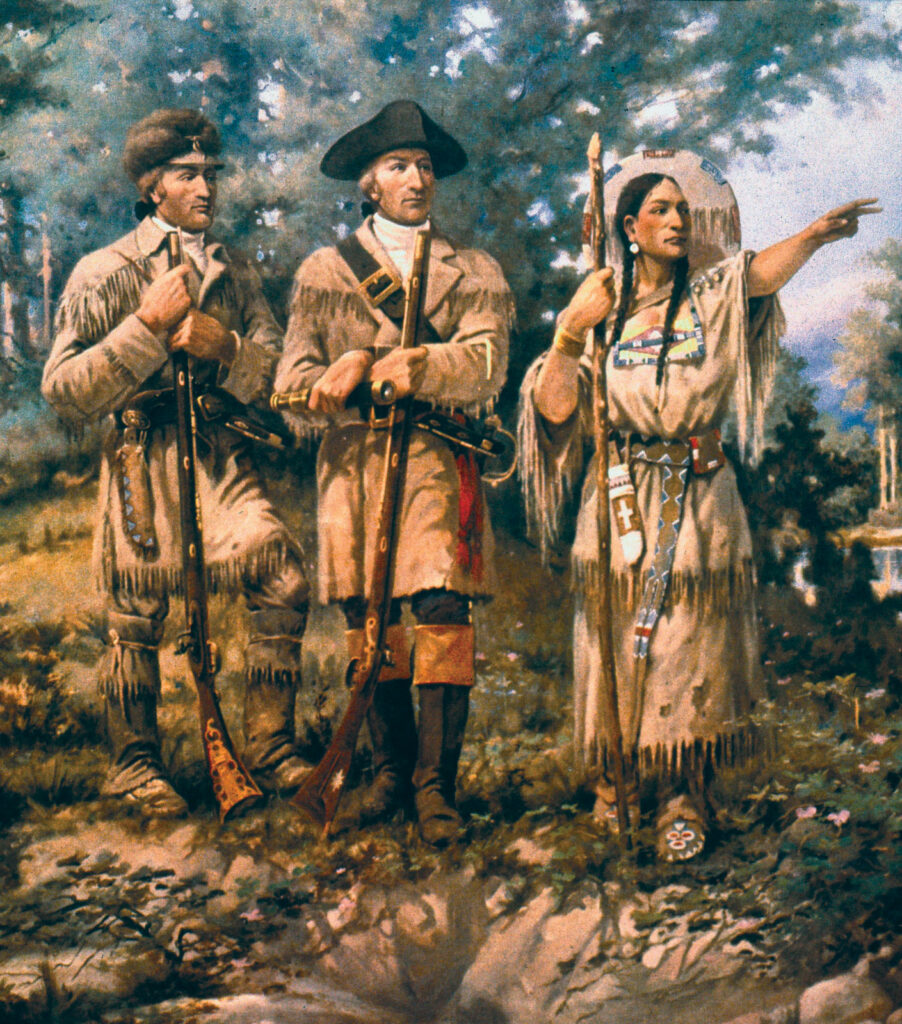Sacagawea: guide to the Lewis & Clark expedition

While in winter camp at Fort Mandan in 1804, Lewis and Clark hired French-Canadian trapper Toussaint Charbonneau as an interpreter, his employment facilitated by his being married to a young Soshone woman, Sacagawea. Sacagawea had been captured in a raid by the Hidatsa on the Soshone when she was 12. Charbonneau bought, or won Sacagawea through gambling, when she was about 16. Pregnant, Sacagawea gave birth to her first child, a son, on 11 February 1805. Little Jean Baptiste Charbonneau would become, by some margin, the youngest member of the expedition. Having a woman and a baby on the journey considerably eased relations with the tribes the Corps met along the way, as war parties did not travel with women and children. Sacagawea’s knowledge helped the expedition considerably along the way, but it was the encounter with her brother, when the expedition reached the land of the Soshone, that really proved her worth. The Soshone provided help, and a guide, to see them over the Rockies. Sacagawea chose to continue with the expedition rather than return to her own people. On the return journey Sacagawea, Toussaint and their son stopped at Fort Mandan, but a few years later, in 1809, they travelled to St Louis, meeting William Clark there. Clark offered to see to the education of Jean Baptiste, and Sacagawea left him with Clark. Records suggest that Sacagawea died in 1812 from illness at Fort Manuel, South Dakota. Clark became guardian to Jean Baptiste and Sacagawea’s daughter, Lisette.
0 Comments